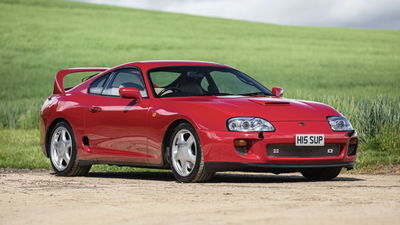10 Things You Didn't Know About The Canadian Grand Prix

The next round of the 2014 Formula 1 season takes place in Montreal, Canada, at the Circuit Gilles Villeneuve. Here are 10 things you might not know about the race:
1. The name

The track was originally called the Île Notre-Dame Circuit after the man-made island that it is located on. However, it was re-named after one of Canada’s most successful F1 drivers, Gilles Villeneuve, in 1982 after his tragic death at the Belgian Grand Prix earlier in the year.
2. Plenty of F1 history

This year’s race will be the 35th to be held at the Circuit Gilles Villeneuve and the 45th Canadian Grand Prix to be featured on the F1 schedule. The country first joined the calendar in 1967 (although six non-championship rounds took place between 1961 and 1966). After eight races at Mosport Park and two at the Circuit Mont-Tremblant, it eventually found its permanent home in 1978 in Montreal.
3. A challenging track

The circuit layout - which is a favourite amongst the drivers - has remained largely unchanged since it first hosted a Formula 1 race. The 2.709 mile track consists of 14 corners and requires a medium downforce set-up, although teams often test lower wing levels in practice. It has a very stop-start nature, as the venue features several long straights that are all followed by slow chicanes or tight hairpins. This makes it very demanding on engines and brakes.
Groundhogs can often be seen scurrying across the circuit over a race weekend, occasionally playing chicken with the fast-approaching F1 cars. Officials try and trap as many as possible on the run up to the weekend and transport them to the nearby Ile Ste-Helene.
However, not all of them can be caught, and they can cause chaos. Anthony Davidson’s example from 2007 is perhaps the most painful. The Brit had been running in third place for backmarkers Super Aguri and looked set to score his first points in the sport, but he struck one of the furry creatures and was forced to pit for repairs, eventually finishing 11th.
5. A record-breaking race

The 2011 Canadian Grand Prix is officially the longest race in Formula 1 history. Torrential rain, a two-hour red flag stoppage and several safety cars increased the overall time to four hours, four minutes and 39.537 seconds. It was won in incredible style by Jenson Button, who rose from last to second in the final part of the race and took the lead from Sebastian Vettel on the final lap after the Red Bull driver made a rare mistake at turn six.
6. Seven for Schumacher

Michael Schumacher is the most successful F1 driver at the Canadian Grand Prix, having won the event seven times. Nelson Piquet and Lewis Hamilton are next on the list with three victories each. The latter is the only driver on the current grid to have won the race multiple times. Kimi Raikkonen, Fernando Alonso, Jenson Button and Sebastian Vettel have all stood on the top step of the podium at the track once.
7. McLaren, masters of Montreal

The McLaren team is the most successful constructor in the history of the race, with 13 wins. Ferrari also has the same number of triumphs, but two of them (in 1963 and 1964) were victories in non-championship races.
8. Home drivers

There hasn’t been a Canadian F1 driver on the grid since Jacques Villeneuve raced for BMW Sauber in 2006. He is also the country’s only Formula 1 world champion. 13 drivers from Canada have competed in the sport but Jacques and his father Gilles (who won six races but died in a crash at the 1982 Belgian Grand Prix) are the only ones to have scored points.
The barrier on the exit of the final corner is one of the most notorious in F1. Previously known as Bienvenue au Quebec - which means ‘Welcome to Quebec’ – it was re-named the ‘Wall of Champions’ following the 1999 Canadian Grand Prix, after Damon Hill, Michael Schumacher and Jacques Villeneuve all retired from the race after crashing into it.
Since then, Jenson Button and Sebastian Vettel have been added to the list. Of course, drivers who haven’t won the F1 title have also hit the wall, including Juan Pablo Montoya, Kamui Kobayashi and (of course) Pastor Maldonado.
10. Plenty of overtaking opportunities

Unlike the last round in Monaco, there are plenty of opportunities to overtake at the Circuit Gilles Villeneuve. The first and 13th corners are undoubtedly the best places to make a move, as they are situated at the end of DRS zones, and passes can also be successfully made at turns three, six, eight and 10.
Because overtaking is possible and the weather usually spices up the action, only 15 drivers have won the Canadian Grand Prix from pole position in the previous 34 races at the track. Strategy often plays a big part in deciding the race as well, with Pirelli bringing its two softest F1 tyre compounds to the race this year.













Comments
No comments found.